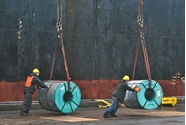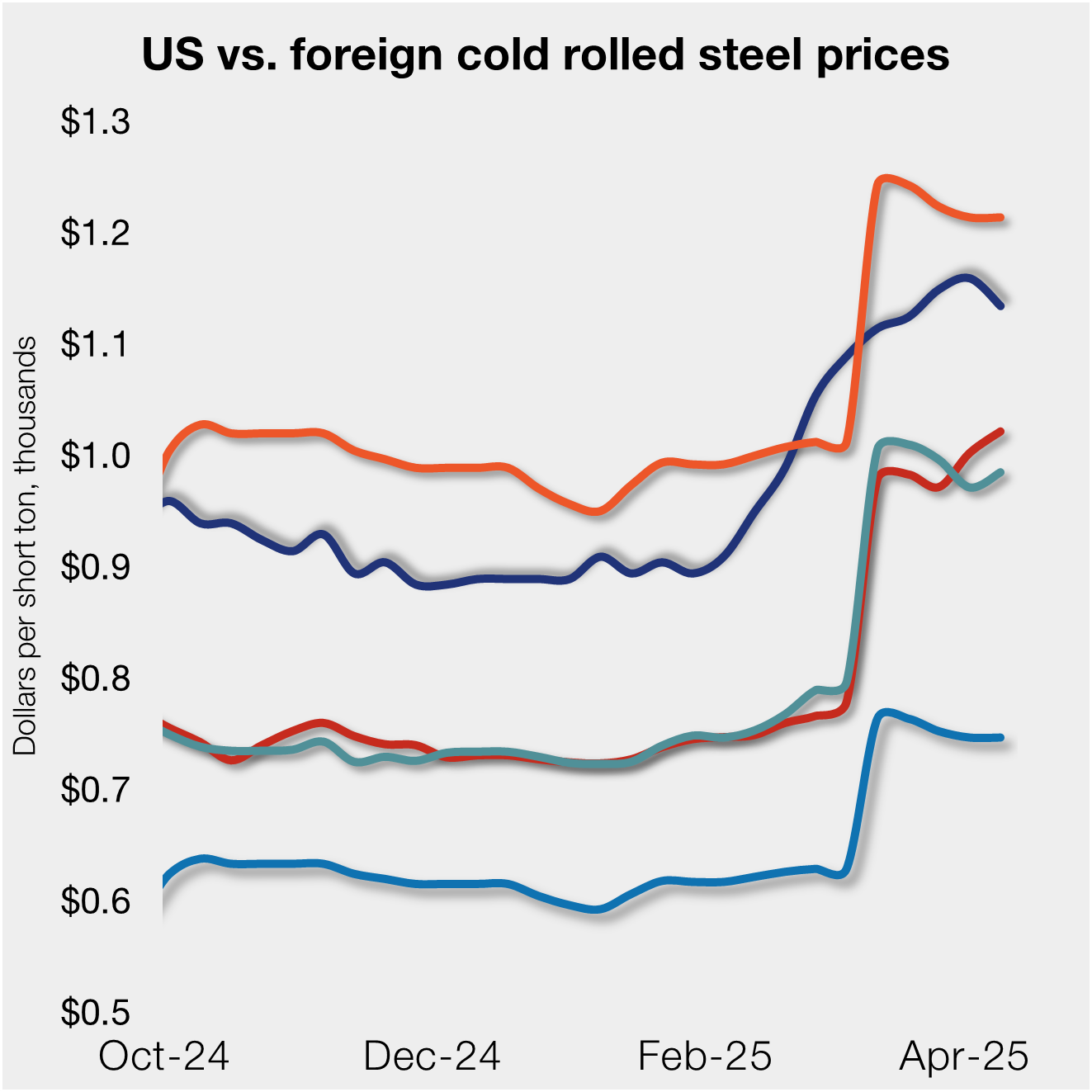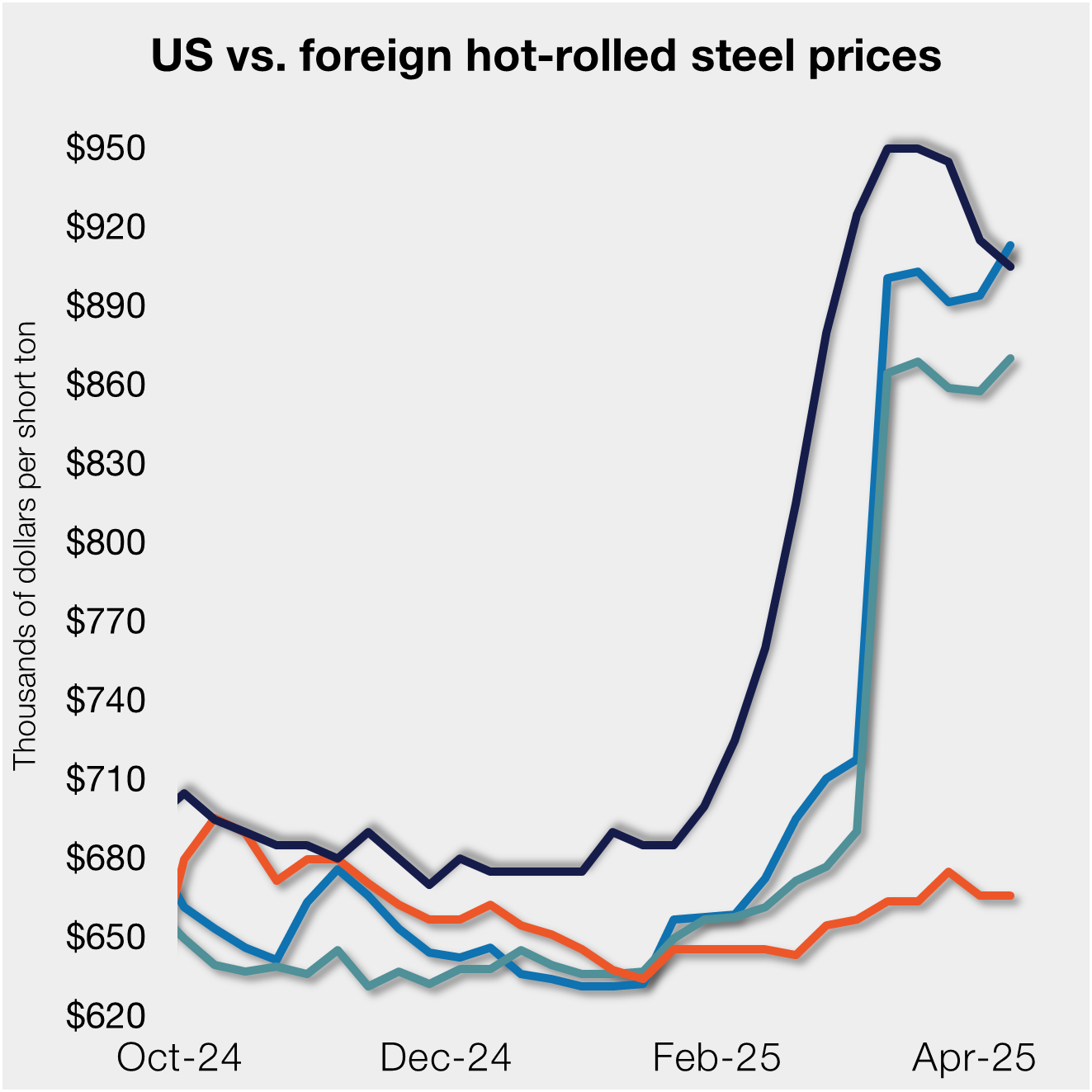Steel Products

U.S. Steel Imports Decline in February, Defy Prediction in the Months Ahead
Written by Tim Triplett
March 14, 2022
Steel import permit applications for February totaled 2,274,000 net tons—a 24.5% decrease from the 3,013,000 permit tons recorded in January and a 25.3% decrease from the January final imports total of 3,044,000. Import permit tonnage for finished steel in February was 1,759,000, down 22.8% from the final imports total of 2,279,000 in January, reported the American Iron and Steel Institute, based on the latest Commerce Department data.
As of the end of February, steel prices in the U.S. had declined by nearly 50% from record highs last year to levels where foreign mills no longer had a price advantage. Steel Market Update pegged the benchmark price for hot rolled coil on March 1 at $1,000 per ton. Most buyers have been in an inventory-reduction mode for the past few months, postponing purchases as they waited to see how low prices would go. Thus many have reduced orders from mills, both domestic and foreign. Therefore, the decrease in imports in February comes as no surprise.
{loadposition reserved_message}
For the first two months of 2022 (including February SIMA permits and January final imports), steel imports totaled 5,318,000 net tons, a 23.1% increase, including 4,038,000 tons of finished steel, a jump of 51%, compared with the same period in 2021. Imports held a 23% share of the U.S. finished steel market year to date through February, AISI reported.
Steel imports with large increases in February permits versus final January imports include reinforcing bars (up 75%), heavy structural shapes (up 28%) and light shapes bars (up 26%). Products with significant year-to date increases included wire rods (up 118%), oil country goods (up 107%), sheets and strip all other metallic coatings (up 102%) cold rolled sheet (up 100%), and sheets and strip hot-dipped galvanized (up 71%).
Through the first two months of 2022, the largest exporters to the U.S. were Canada (1,030,000 tons, down 5% from the same period last year), Mexico (985,000 tons, up 60%) and Brazil (705,000 tons, down 35%), AISI said.
Steel prices appear to have bottomed in the first week of February and are on the upswing as U.S. mills raise prices in response to big jumps in global raw material costs triggered by the war in Ukraine. Normally, rising prices in the U.S. would attract more steel from overseas, but mills all over the world are dealing with higher costs due to the disruption of slab, pig iron and scrap supplies from Ukraine and Russia. Ripple effects from the conflict in Eastern Europe make prices and the level of steel imports into the U.S. risky to predict in the months ahead.
By Tim Triplett. Tim@SteelMarketUpdate.com

Tim Triplett
Read more from Tim TriplettLatest in Steel Products

SMU flat-rolled market survey results now available
SMU’s latest steel buyers market survey results are now available on our website to all premium members. After logging in at steelmarketupdate.com, visit the pricing and analysis tab and look under the “survey results” section for “latest survey results.” Past survey results are also available under that selection. If you need help accessing the survey results, or if […]

CRU tariff webinar replay now available
CRU’s latest webinar replay on how Trump’s tariffs affect the global steel market is now available on our website to all members. After logging in at steelmarketupdate.com, visit the community tab and look under the “previous webinars” section of the dropdown menu. You’ll find not only this special CRU webinar but also all past Community […]

US, offshore CRC prices diverge
US cold-rolled (CR) coil prices declined this week, slipping for the first time since early February. Most offshore markets deviated, moving higher this week.

Construction growth slowed in March on tariff woes: Dodge
The decline comes after reaching a record high in January to kickstart the year.

Return of S232 zapped gap between US and EU HR prices, Asian HR remains cheaper
Domestic hot-rolled (HR) coil prices declined this week for a third straight week. Most offshore markets bucked the trend and gained ground. Uncertainty in the US market around tariffs, especially after “Liberation Day,” caused US prices to slip as buyers moved to the sidelines. It’s unclear to date whether the 90-day pause on the more […]
